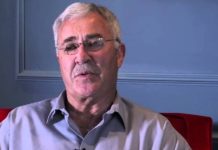
[miningmx] — THE second draft of the National Planning Commission’s (NPC’s)
development strategy for SA again leans heavily on the contribution of the mineral
resources sector, naming security of tenure as a key requirement for increasing the
sector’s contribution towards the growth of the country’s economy.
The NPC, chaired by Minister in the Presidency Trevor Manuel, on Wednesday
released its revised National Development Plan (NPD) – a framework on the policy
directives South Africa needs to fast-track economic growth. The strategy seeks to
provide ways on how the economy could sustainably grow at an annual rate of 5%
to attain the elimination of poverty by 2030.
The executive summary of the NPD sets no specific targets for mining, but says the
strategy aims for the creation of 11 million job opportunities in South Africa’s
economy in addition to the existing 13 million. It acknowledges that poor
infrastructure and policy uncertainty have in recent years hindered the growth of
the sector.
“South Africa holds large global shares in platinum group metals, gold, diamonds,
manganese, coal, iron ore and uranium. Yet over the past decade, domestic mining
has failed to match the global growth trend in mineral exports due to poor
infrastructure, alongside regulatory and policy frameworks that hinder investment,’
read the report.
It listed three key imperatives needed to maximise the benefit of the country’s
mineral resources, of which the first is the provision of “clear certainty’ over
property rights. Second to this is increasing rail, water and energy infrastructure;
while it also calls for a taxation regime “that is fair, equitable and predictable and
that recognises the non-renewable nature of mineral resources’.
Cautioning against the temptation to address social and governance ills with a
revision of policies, the NPD said policy instability in South Africa was a major
concern, not only for mining but also other spheres of the economy.
“While there are cases where policy must change, government often underestimates
the disruptive effect of major policy adjustments on service delivery,’ it read. “A
balance has to be struck, and at present that balance is missing.’
South Africa would remain reliant on coal for its electricity needs over the long term,
despite existing imperatives to bring renewable sources into the energy mix, a
situation which necessitates the prioritisation of infrastructure development in the
Waterberg area.
“The country would need an additional 29,000MW of electricity by 2030. About
10,900MW of existing capacity is to be retired, implying new build of more than
40,000MW,’ read the report. “At least 20,000MW of this capacity should come from
renewable sources.’
The report doesn’t make reference to export levies as a way to ensure coal-supply
security, but does affirm the need for Transnet’s existing plans to invest in a new
heavy-haul rail corridor to the Waterberg coal field, as well as the upgrade of the
central coal basin coal network.
The report also said that while beneficiation would remain an important strategic
priority, the country would have to consider some important trade-offs.
“South Africa is losing global market share in products such as ferrochrome,’ it said.
“However, first-stage processing or smelting is highly energy and capital intensive,
potentially drawing capital away from other sectors. South Africa should be selective
about the areas in which it intends to support first-stage beneficiation.’
It said priority areas should include those where suitable capacity already exists, or
where beneficiation is likely to lead to downstream manufacturing. “Beneficiating all
of the country’s minerals is neither feasible nor is it essential for developing a larger
manufacturing sector,’ the report said.









